The conflict between Russia and Ukraine, which began on February 24, 2022, has been nothing short of a catastrophe and a crisis for the globe. One year on, thousands of civilians are dead, many cities in ruins and millions forced to seek refuge elsewhere.
Tens of thousands of troops have been killed or seriously wounded on each side. Beyond Ukraine’s borders, the military action shattered European security, redrew nations’ relations with one another and frayed a tightly woven global economy.
Here are four ways the conflict has impacted the world:
‘Conventional warfare is back’
Three months before the offensive, then-British Prime Minister Boris Johnson scoffed at suggestions that the British army needed more heavy weapons.
“The old concepts of fighting big tank battles on European landmass,” he said, “are over.”
Johnson is now urging the UK to send more battle tanks to help Ukraine repel Russian forces.
Despite the role played by new technology such as satellites and drones, this 21st-century conflict in many ways resembles one from the 20th. Fighting in eastern Ukraine’s Donbass region is a brutal slog, with mud, trenches and bloody infantry assaults reminiscent of World War I.
The conflict has sparked a new arms race that reminds some analysts of the 1930s buildup to World War II.
Russia has mobilised hundreds of thousands of conscripts and aims to expand its military from 1 million to 1.5 million troops. The US has ramped up weapons production to replace the stockpiles shipped to Ukraine. France plans to boost military spending by a third by 2030, while Germany has abandoned its longstanding ban on sending weapons to conflict zones and shipped missiles and tanks to Ukraine.
Before the conflict, many observers assumed that military forces would move toward more advanced technology and cyber warfare and become less reliant on tanks or artillery, said Patrick Bury, senior lecturer in security at the University of Bath.
But in Ukraine, guns and ammunition are the most important weapons.
“It is, for the moment at least, being shown that in Ukraine, conventional warfare — state-on-state — is back,” Bury said.
READ MORE:
Will tanks change the course of the Russia-Ukraine war?
A reinvigorated NATO
Many analysts held the view that Russian President Vladimir Putin might have hoped the military action would split the West and weaken NATO. Instead, the military alliance has been reinvigorated.
A group set up to counter the Soviet Union appears to have found a renewed sense of purpose, with Finland and Sweden ditching their decades of nonalignment and seeking NATO membership as protection against Russia.
The 27-nation European Union has hit Russia with tough sanctions and sent Ukraine billions in support.
“The EU is taking sanctions, quite serious sanctions, in the way that it should. The US is back in Europe with a vengeance in a way we never thought it would be again,” said defence analyst Michael Clarke, former head of the Royal United Services Institute think tank.
NATO member states have poured weapons and equipment worth billions of dollars into Ukraine.
The alliance has buttressed its eastern flank, and the countries nearest to Ukraine and Russia, including Poland and the Baltic states, have persuaded more hesitant NATO and European Union allies, potentially shifting Europe’s centre of power eastwards.
However, there are some cracks in the unity. Hungarian Prime Minister Viktor Orban, has lobbied against sanctions on Moscow and refused to send weapons to Ukraine.
Western unity will come under more and more pressure the longer the conflict grinds on.
“Russia is planning for a long war,” NATO Secretary-General Jens Stoltenberg said at the end of 2022, but the alliance was also ready for the “long haul.”
READ MORE:
US, allies plan ‘big’ Russia sanctions for war anniversary
Closer ties between Moscow and Beijing
The West after its military action wanted to make Russia a pariah. While Moscow isn’t entirely friendless, it stands isolated from the West for at least the past one year.
Its oligarchs have been sanctioned and its businesses blacklisted, and international brands have disappeared from the country’s streets.
Russia, on its part, has strengthened economic ties with China, though Beijing is keeping its distance from the fighting and so far has not sent weapons. The US has recently expressed concern that may change.
Moreover, Russia has reinforced military links with North Korea and Iran, which supplies armed drones.
Moscow continues to build influence in Africa and the Middle East with its economic and military clout. Russian Wagner mercenary group has grown more powerful in conflicts from the Donbass to the Sahel.
In an echo of the Cold War, the world is divided into two camps, with many countries, including India, hedging their bets to see who emerges on top.
READ MORE:
Russia’s top general has stepped into the Ukraine battlefield. What next?
Impact on economy
Tracey German, professor of conflict and security at King’s College London, said the conflict has widened a rift between the “US-led liberal international order” on one side, and angry Russia and emboldened rising superpower China on the other.
The conflict’s economic impact has been felt from chilly homes in Europe to food markets in Africa. Before the military offensive, European Union nations imported almost half their natural gas and third of their oil from Russia.
The sanctions slapped on Russia in response to its actions delivered an energy price shock on a scale not seen since the 1970s.
The conflict resulted in disruption of global trade that was still recovering from the pandemic. Food prices have soared, since Russia and Ukraine are major suppliers of wheat and sunflower oil, and Russia is the world’s top fertiliser producer.
But food remains a geopolitical football. Russia has sought to blame the West for high prices, while Ukraine and its allies accuse Russia of cynically using hunger as a weapon.
The conflict “has really highlighted the fragility” of an interconnected world, just as the pandemic did, German said, and the full economic impact has yet to be felt.
It has also roiled attempts to fight the climate crisis, driving an upsurge in Europe’s use of heavily polluting coal.
Yet Europe’s rush away from Russian oil and gas may speed the transition to renewable energy sources faster than countless warnings about the dangers of global warming.
The International Energy Agency says the world will add as much renewable power in the next five years as it did in the last 20.
READ MORE:
How drone strikes deep inside Russia can change Ukraine conflict















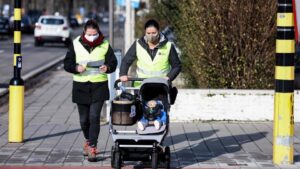



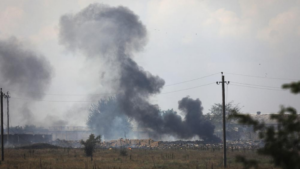


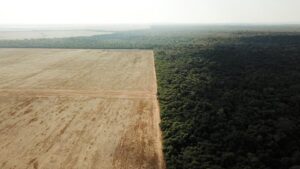



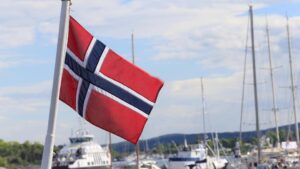










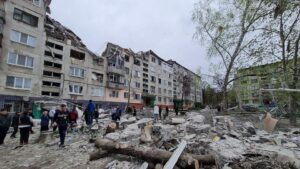




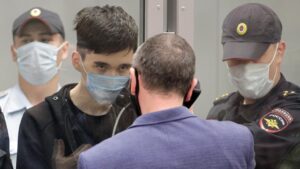



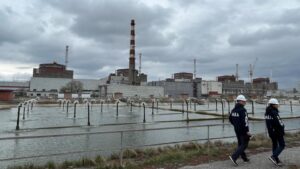
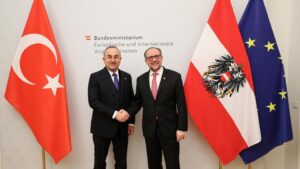



Be First to Comment